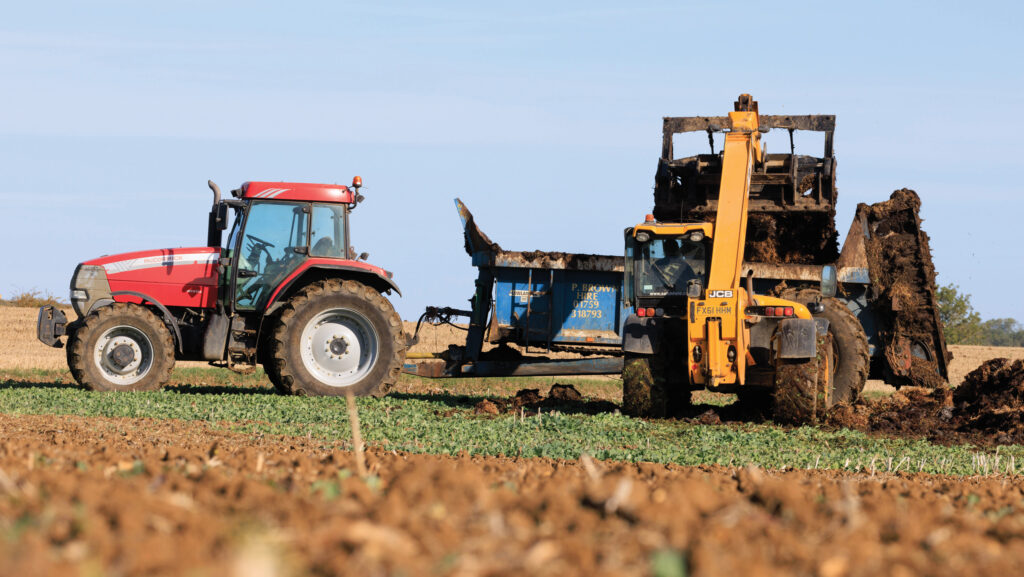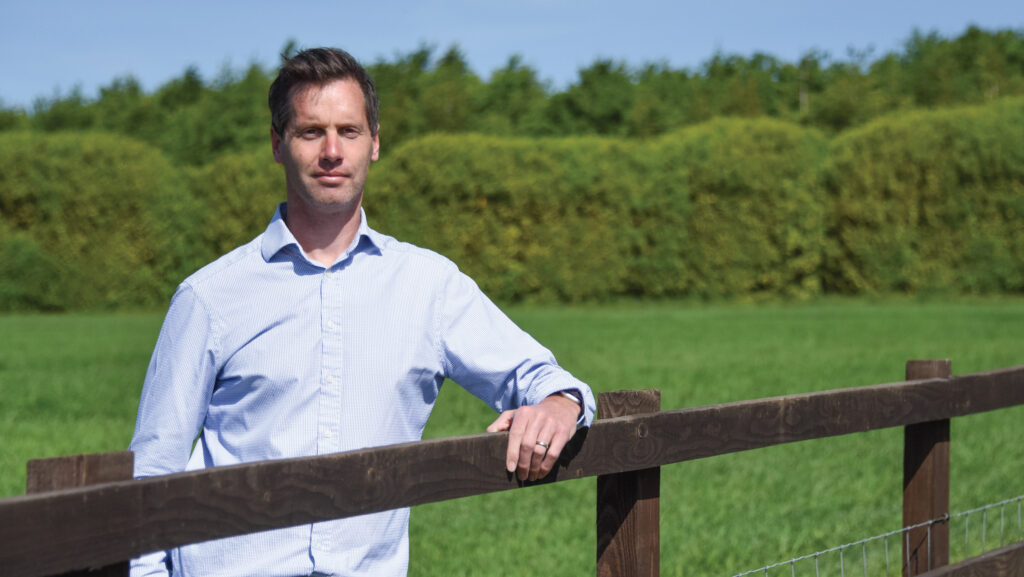How to improve arable performance in challenging times
 © Tim Scrivener
© Tim Scrivener Reducing costs and emissions while maintaining food production was the focus of the recent Farm Carbon Toolkit’s field day in Herefordshire.
Having control over the use of fossil fuel-based inputs and recognising the value of farmyard manure and livestock grazing are two key components of a sustainable farming system.
While there was no escaping the impact that changing weather patterns are having on farming businesses – with the past two years proving especially challenging – another learning was the need to keep making changes in response to the conditions.
See also: Tips on achieving healthy hedgerows on farm
For host farmer and Farmers Weekly Farmer Focus writer Billy Lewis – who farms in partnership with his family in Herefordshire – the very wet year has been slightly easier for managing livestock than it has for the arable enterprise.
“We’ve been direct drilling for the last five years or so, but the plough has been out both this year and last year, and remedial cultivations have been necessary,” he said.
“It’s taking a lot of brain power as we re-think things and we’re having to be more pragmatic.”
Soil organic matter levels are rising by 0.08% a year on the arable land, to which compost is applied, he noted.
“We are making progress and know where we want to get to, but the weather is doing its best to thwart that.”
Antony Ellis, Pensipple Farm, Cornwall

Anthony Ellis © Meet the Team
For south-east Cornwall farmer Antony Ellis, bringing livestock back into an arable system has allowed him to reduce inputs and make inroads with emissions.
Having introduced cover crops and herbal leys across the farm some years ago, he has been able to graze them with sheep and benefit from nutrient cycling – with nitrogen use across the farm down by 25%.
Antony hopes to make more progress and plans to make greater use of foliar products this year, so bringing total nitrogen use down further.
He has also installed solar panels, using sheep to graze under them, which helps with the farm’s carbon footprint and has resulted in soil organic matter levels rising.
More recently, Antony has used lambs to graze winter wheat. Having gone onto the crop in early February, at a stocking rate of about 80 lambs a hectare, they were moved off just four days later.
“They grazed it right down, very tight,” he recalled. “From just that action of putting lambs on the winter wheat, we saw an overall benefit of £110/ha.”
That figure came from no requirement for either a T0 spray or plant growth regulators (PGRs), while the nitrogen application was 25kg/ha less than usual.
Together with the use of strip tillage rather than ploughing, the saving on inputs and cultivations worked out at about £75/ha.
The lambs ate £30/t worth of dry matter, he calculated.
The emissions reductions resulting from a low-disturbance, low-input approach to growing wheat were worth £6/ha (based on a carbon credit of £30/t).
Costs and emissions savings from sheep grazing winter wheat – Antony Ellis |
||
| Inputs/costs | £/ha | Carbon dioxide equivalents (t/ha) |
| Plough | 25 | 0.1 |
| Plant growth regulator | 9 | 0.01 |
| T0 fungicide | 30 | 0.01 |
| 25kg of nitrogen fertiliser | 10 | 0.07 |
| Total | 74 | <0.19 |
| Income | ||
| Lamb grazing | 30 | |
| Emissions reduction | 6 | |
| Net benefit | 110 | |
Nick Down, Yattendon Estate, Berkshire

Nick Down © Velcourt
The carbon footprint of Yattendon Estate, in Berkshire, has fallen by 40% in the past five years, mainly thanks to reductions in fuel and input use.
The emissions reduction over that period are worth about £53,000, revealed farm manager Nick Down of Velcourt, who pointed out that the calculations are based on a carbon value of £30/t.
In that time, he has made good use of cover and catch cropping in the rotation, included companion crops, investigated living mulches and reduced cultivations where possible.
He has also overseen the introduction of livestock on herbal leys and cover crops, through a long-term partnership with an estate tenant.
Having the leys in a fixed location means the business can take the Sustainable Farming Incentive (SFI) payment and get rental income, while improving soil health.
Many of the changes have improved the farm’s resilience, reported Nick.
“Protection from weather extremes has been one of our aims, as have soil stability and having a positive effect on biodiversity.”
Although his first choice is to do nothing to the soil when it comes to crop establishment, Nick stressed that cultivation is not always a bad thing.
“We don’t want any crop failures – we have to be pragmatic about when we will see benefits and honest about any limitations.”
Emissions from fuel use have fallen by 30% and inputs are down by the same amount, he reported.
The next target is nutrition – a considerable challenge given that the farm is growing milling wheat.
Angus Gowthorpe, Escrick, Yorkshire

Angus Gowthorpe © Jim Varney
Significant costs savings of £440/ha on winter wheat have been achieved by Yorkshire farmer Angus Gowthorpe, who has been running a regenerative system on his mixed farm for the past 11 years.
He has been fine-tuning it along the way and started mob grazing four years ago on both herbal leys and permanent pasture.
On the arable enterprise, input use has been reducing every year. No insecticides, plant growth regulators or fungicides are used, fertiliser use is right down and direct drilling has been practised since he changed.
Looking at winter wheat production and comparing it to a conventional farming system with costs of £812/ha, Angus is now at £372/ha.
“Even in years that my yields are down, the costs are much lower,” he said.
The same is true of his pedigree 40-cow suckler herd, which has seen savings of £252 a cow.
Although he needed to invest in mob grazing to the tune of £3,726, Angus is now seeing a net benefit of more than £20,000.
“Herbal leys have been the game changer and come with an SFI payment,” he said. “But they must be mob grazed if you are to see the full benefit for your farming system.”
In contrast, cover crops grown on the farm are not grazed any more. “Even with sheep and on light land, we were getting too much compaction. It restricted the following spring crops too much,” he said.
Arable costings for winter wheat 2024 – Angus Gowthorpe |
|||
| Previous system | £/ha | Current System | £/ha |
| Subsoil (one in four) | 20 | Direct drill | 68 |
| Plough | 80 | ||
| Combi drill | 85 | ||
| Roll | 25 | ||
| Nitrogen (220kg) | 217 | Nitrogen (50kg + 22kg foliar) | 185 |
| P and K | 157 | ||
| Fungicides | 135 | Fungicides | 44 |
| Plant growth regulators | 12 | Plant growth regulators | 0 |
| Insecticides | 1 | Insecticides | 0 |
| Herbicides | 80 | Herbicides | 75 |
| Total | 812 | Total | 372 |
| Total saving of £440/ha | |||
Arable emissions for winter wheat 2024 – Angus Gowthorpe |
|||
| Previous system | Carbon dioxide equivalents (t/ha) | Current System | Carbon dioxide equivalents (t/ha) |
| Subsoil (one in four) | 0.11 | Direct drill | 0.07 |
| Plough | 0.1 | ||
| Power harrow/drill | 0.09 | ||
| Roll | 0.02 | ||
| Nitrogen (220kg) | 1.51 | Nitrogen (50kg + 22kg foliar) | 0.54 |
| P and K | 0.05 | ||
| Total | 1.88 | ||
| Total reduction of 1.27t, giving a value of £38 (@£30/t) | |||
This article was written with information from the Farm Carbon Toolkit’s recent annual field day in Herefordshire

